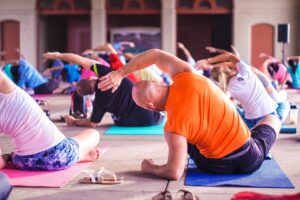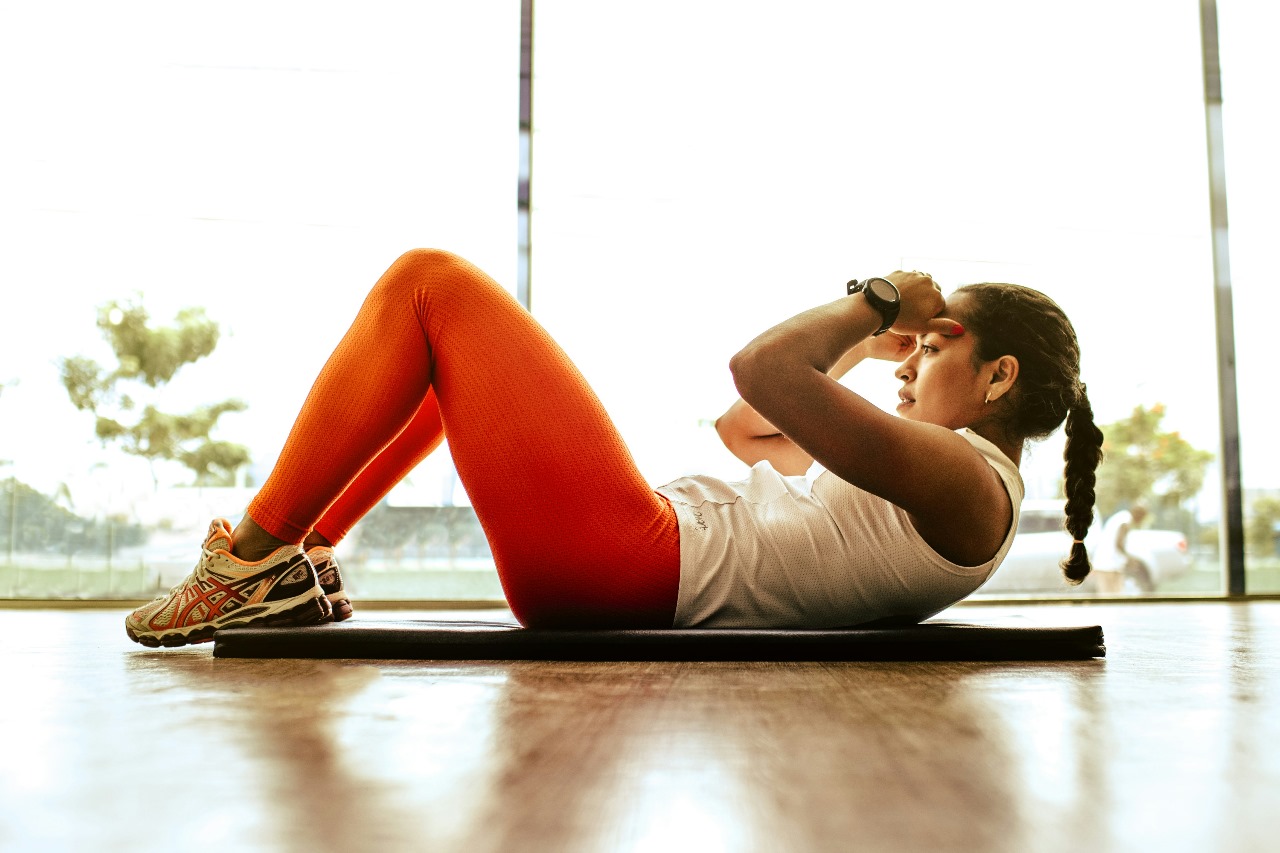HOW MUCH SHOULD YOU EXERCISE?
In line with Australian physical activity recommendations, it’s recommended that women undertake 150 to 300 minutes (2 ½ to 5 hours) of moderate activity or 75 to 150 minutes (1 ¼ to 2 ½ hours) of vigorous intensity physical activity each week.
This can include:
» biking
» walking
» swimming
» jogging
It’s also recommended to fit in at least two strength sessions every week, and limit long periods of sitting. Understanding exercise intensity is important. A quick way to test your exercise intensity is using the talk test. When exercising, can you:
» Talk comfortably and sing comfortably? You’re probably exercising at a light intensity.
» Talk comfortably but not sing? This is likely to be moderate intensity exercise.
» Neither talk nor sing comfortably? You’re working hard at a vigorous/high intensity.
Consistency is key – try to be physically active on most, if not ALL days. For beginners: start with 10 minutes of light activity, slowly boosting exercise intensity as it becomes easier.

WHO ARE THE EXERCISE PROFESSIONALS?
Accredited Exercise Physiologists (AEP) are qualified allied health professionals that hold a minimum of 4-years of university training. AEPs are equipped to design, deliver and evaluate safe and effective evidence-based exercise interventions to individuals at high risk of developing, or with existing, chronic and complex conditions and injuries, including any conditions for which there is evidence that exercise can improve the client’s clinical status. By speaking with an Accredited Exercise Physiologist who works and specialises in women’s health, they can provide you with a program suitably tailored to your own level of fitness, and assist you with your health or any medical conditions or injuries you may have. To get in contact with your local accredited exercise professional, visit the ESSA website: www.essa.org.au or speak with your GP for a referral to an Accredited Exercise Physiologist.
EXERCISING FOR SAFE WEIGHT LOSS:
In 2011-12, over 2.3 million Australians aged 15 years and over reported to be on a diet to help lose weight or for another health reason. A majority of these Australians were women. Unfortunately, women are also more likely than men to have higher rates of body dissatisfaction, poor body image, engage in riskier health behaviours such as extreme dieting and purging, and report depression and anxiety associated with their weight. We have become a society obsessed with losing weight through extreme measures, fad diets and magic pills, which may be why a majority of weight loss efforts fail long term. Due to these extreme measures, exercise is not typically recommended, yet, exercise has been shown to play a crucial role not only with weight loss but for our overall physical and mental health. Regular physical activity is important for the prevention of chronic diseases, such as cancers and diabetes, and assists with the management of anxiety and depression. Let’s take a closer look on how to make exercise and weight loss a positive experience. Your mindset towards exercise or physical activity is a great determinant towards your success or failure with weight loss. If you consistently see exercise as difficult or as a punishment, then you’re not likely to stick to a plan, and who would if you say you hated it. If you’re a self-confessed non-exerciser, rather than feeling confined to traditional forms of exercise, such as walking/running, the gym or swimming, try other forms! Dancing, horse riding or stand up paddle boarding all require some sort of physical exertion and can be extremely fun. Go out and try something new, you may even make some great workout friends along the way, which will help your weight loss even further! Other ways to improve your relationship towards exercise can be focusing on the positives you receive from it, such as increased moods, confidence, energy, and strength, as well as lowering your risk for chronic diseases. If you’re still finding it difficult to stick to your new exercise plan, see my top 10 tips for some extra help..

TOP 10 TIPS
1. Ask yourself why. If you’ve ever tried to lose weight before there usually comes a moment in time when you ask yourself why you’re doing this. So why is losing weight important to you? What will you be able to do once you lose weight? Is it to have more energy to play with your kids, buy an outfit in a particular shop, or climb stairs without getting puffed? Finding your why will enable you to stick to your plan when the going gets tough.
2. Set small, incremental goals. Sometimes we get overwhelmed by the weight we’d like to lose so it’s always recommended to break down the goal into smaller amounts. Particularly as the recommended weight loss is 0.5-1kg maximum per week.
3. Track your progress. Weight loss progress can seem slow so it’s recommended to take as many measurements as you can to help you stay on track. Many people tend to only use their weight on a scale but you should also take body measurements, photos and perform a fitness test.
4. Keep a food and fitness diary. Many weight loss studies have shown that when people track their food and physical activity throughout the day or week it resulted in higher and more sustainable weight loss. This was thought to be due to a greater awareness.
5. Recruit friends and family. Let’s face it, exercise can be tough, but when you do it with other people it has been shown to increase adherence as no one wants to be the one that cancels.

6. Use incentives. Incentives are a great way to stay on track as you reach milestones. They can range from scheduling a massage, buying a new outfit, or even new exercise gear.
7. Progress not perfection. When you’re first starting out, you can get caught up in trying to do everything perfectly, but sometimes this isn’t sustainable. Instead, focus on positive changes you’ve made; did you cut out your soft drink habit or are you taking the stairs rather than the lift? All of these positive health behavio will help you reach your goal.
8. Plan for failure. Let’s face it, life happens, and when it does it’s best to be prepared. Put out your clothes the night before, pack a healthy lunch, and schedule in your exercise time so you can plan out your week.
9. Action, action, action! Unless you actually move your body you won’t receive the great rewards. Any type of physical activity will help get you to your goal. So if you didn’t make it to the gym today, ask yourself what other activities you can do. Make sure you get up every 1-2 hours and walk around for 5 minutes, take the stairs, park further away, or set a goal of doing 100 squats off your chair throughout the day. Every bit counts! .
10. Seek out the professionals for help. Speak to an exercise professional such as an Accredited Exercise Physiologist on how to kick start your exercise goals. Not only can they provide motivation but they are the experts of exercise and can tailor a plan specific to you making you more likely to stick to it.
